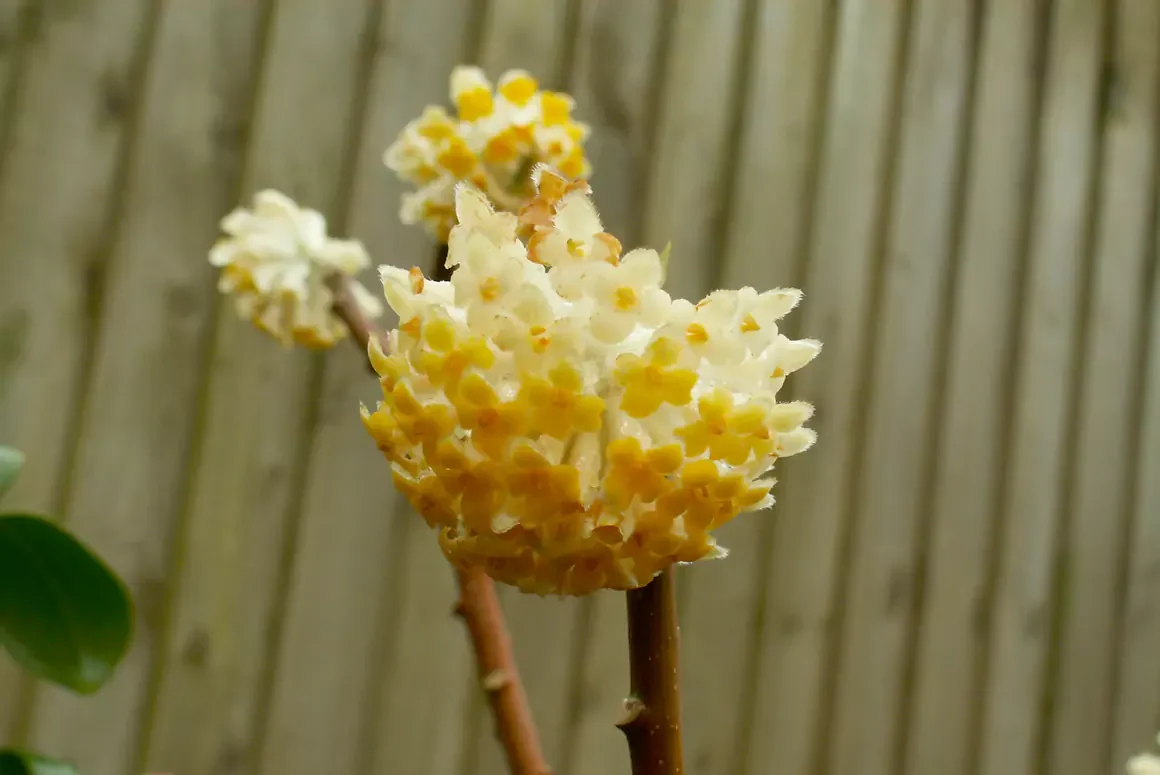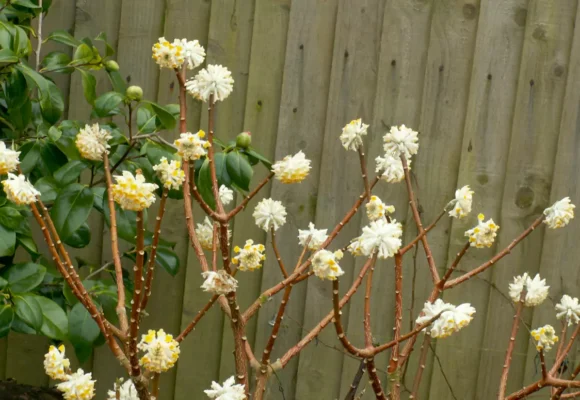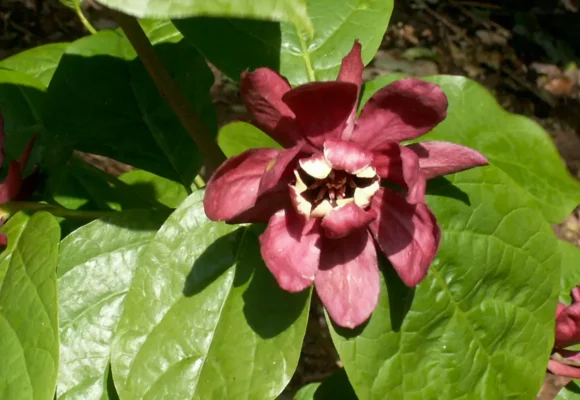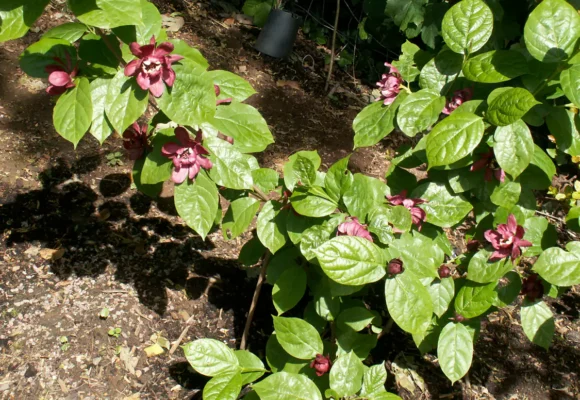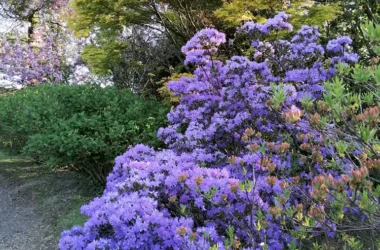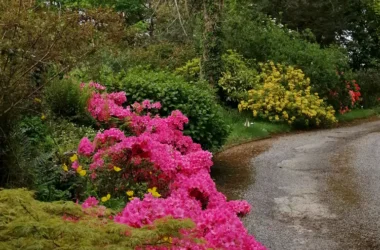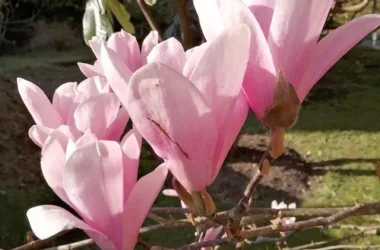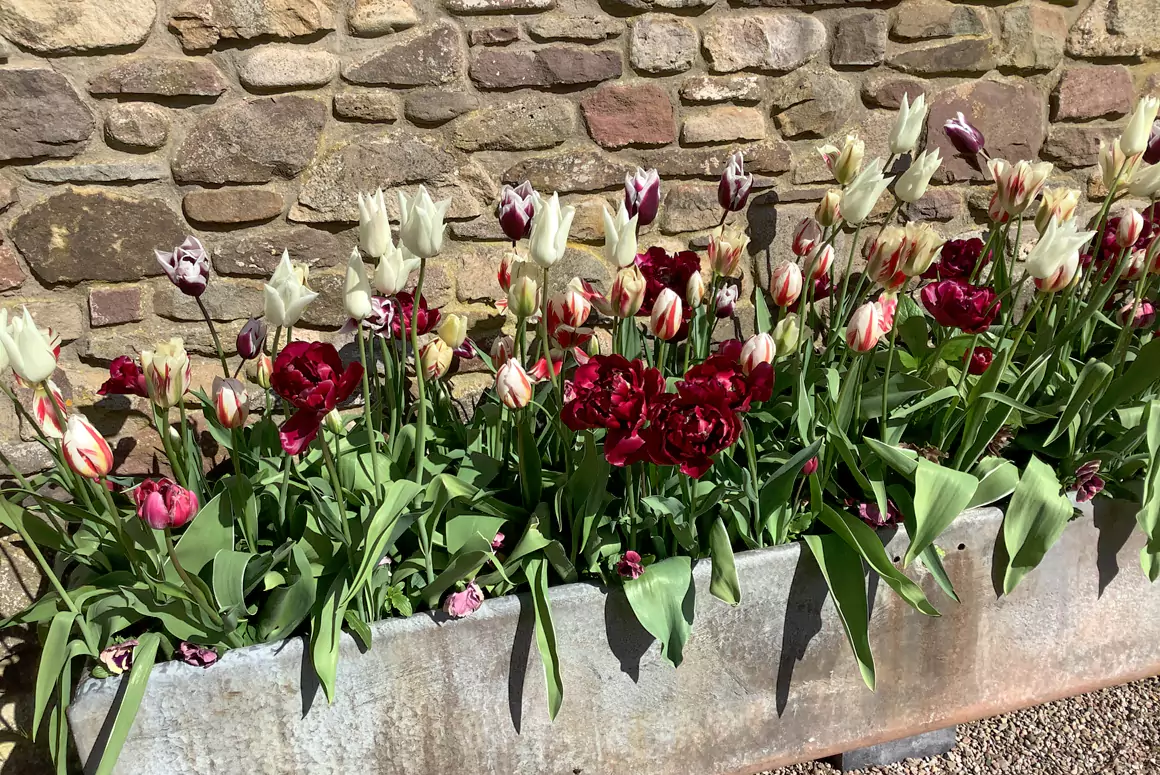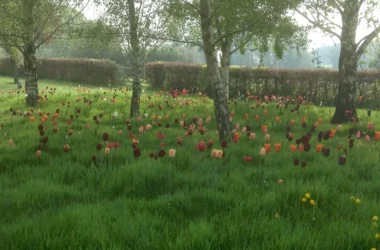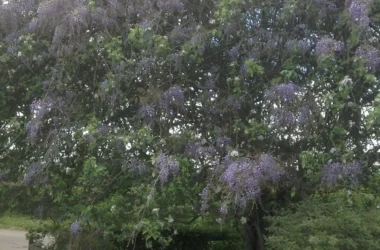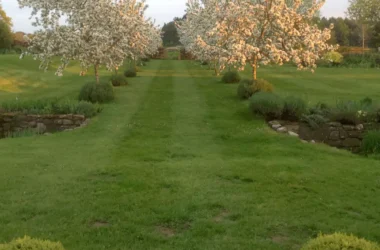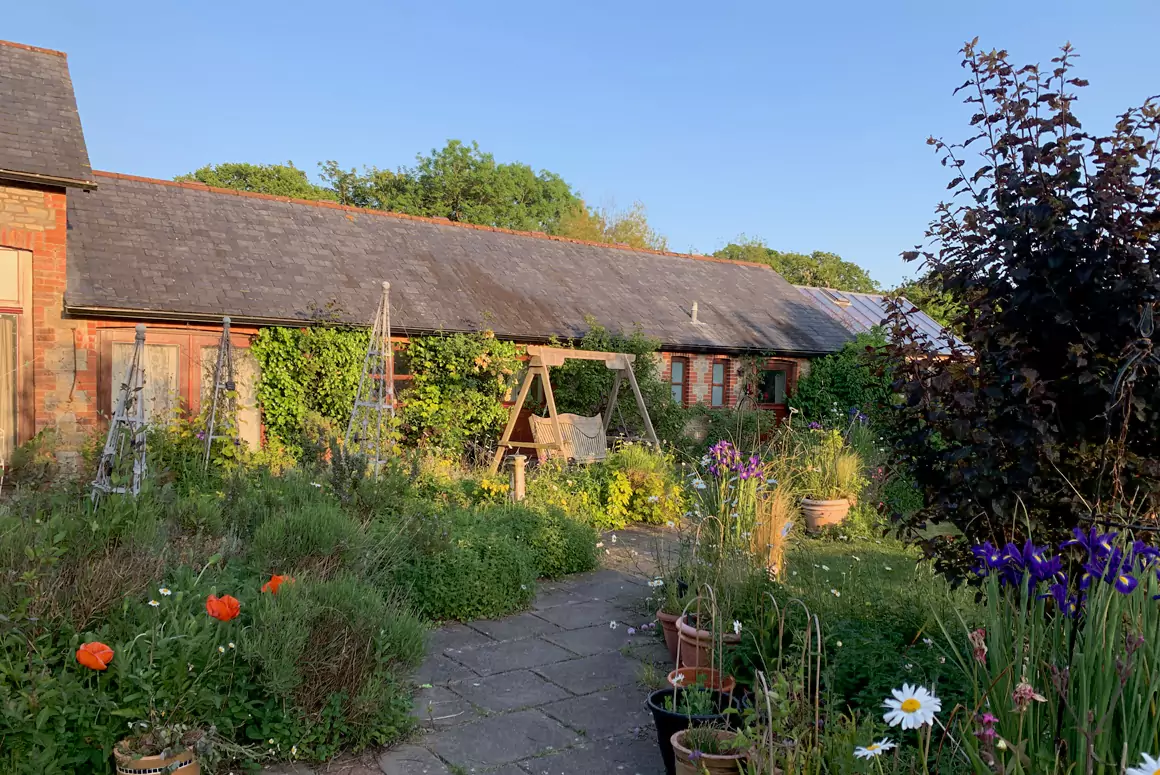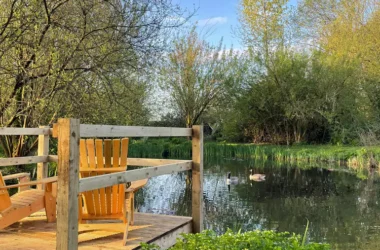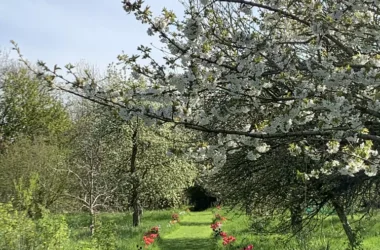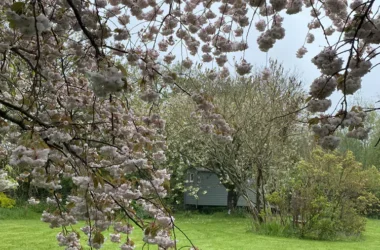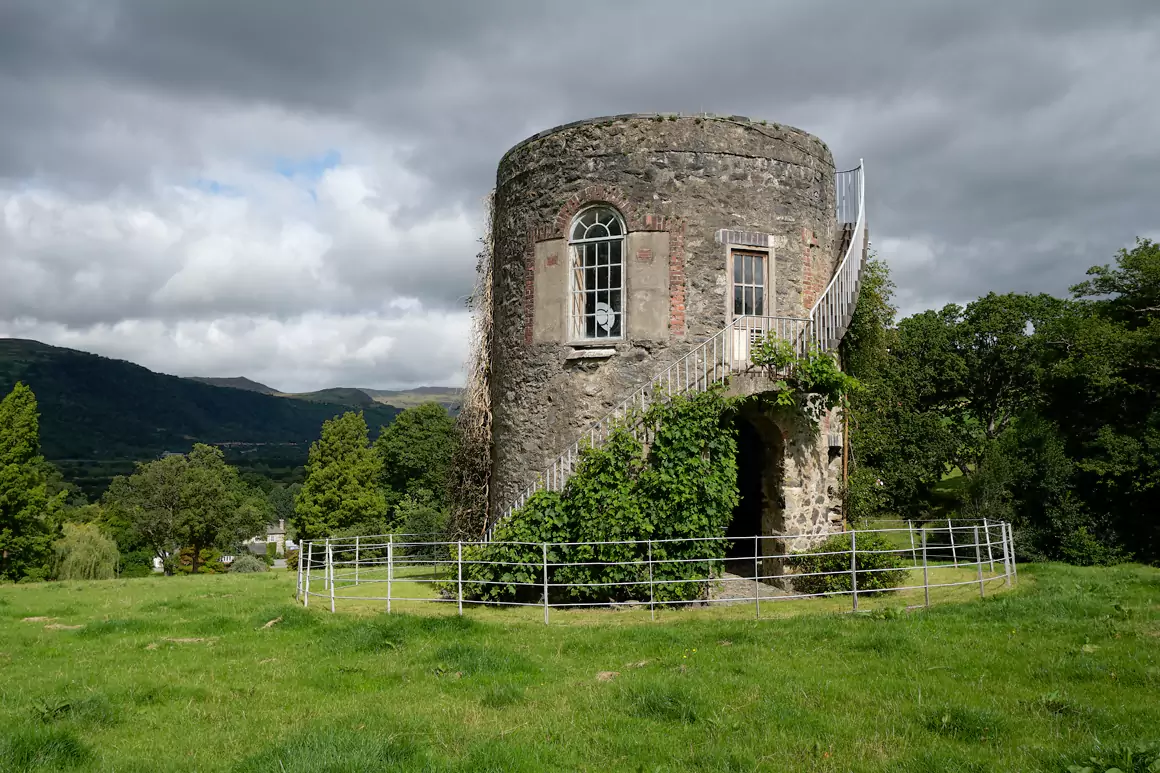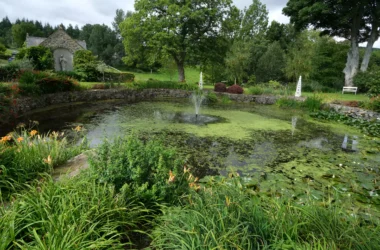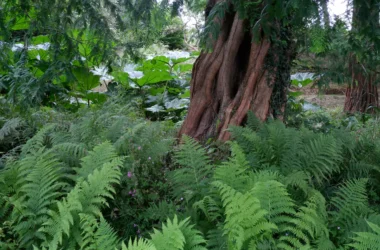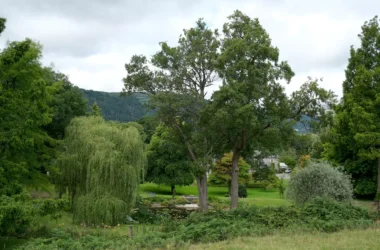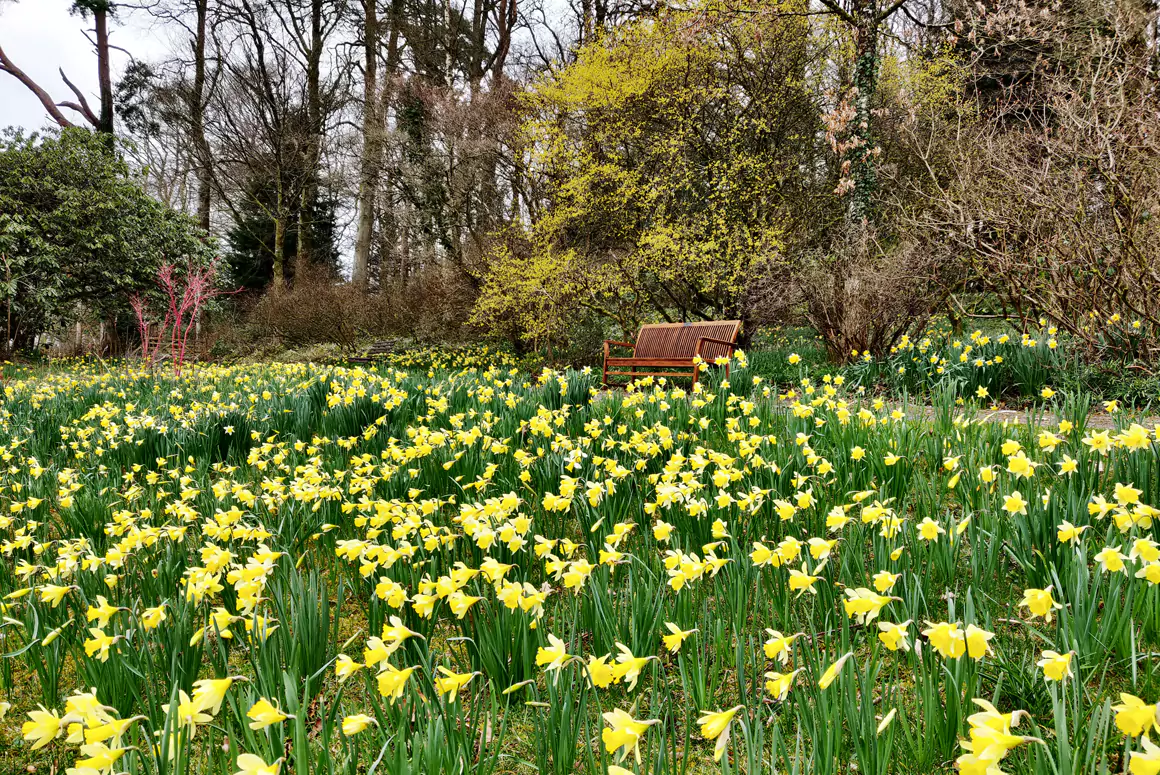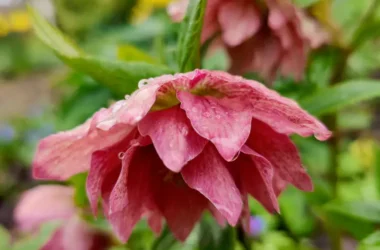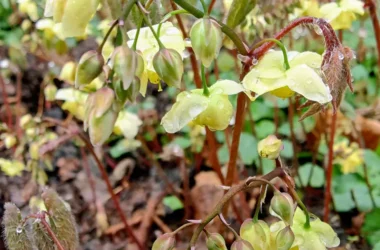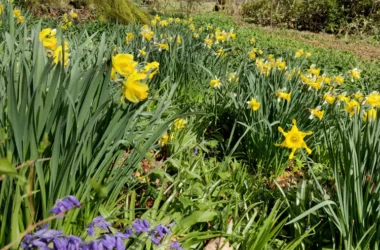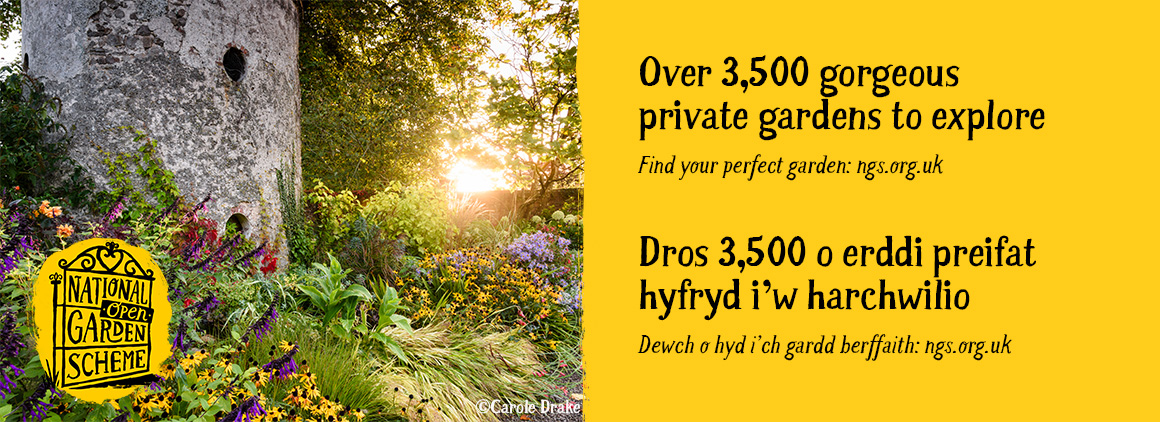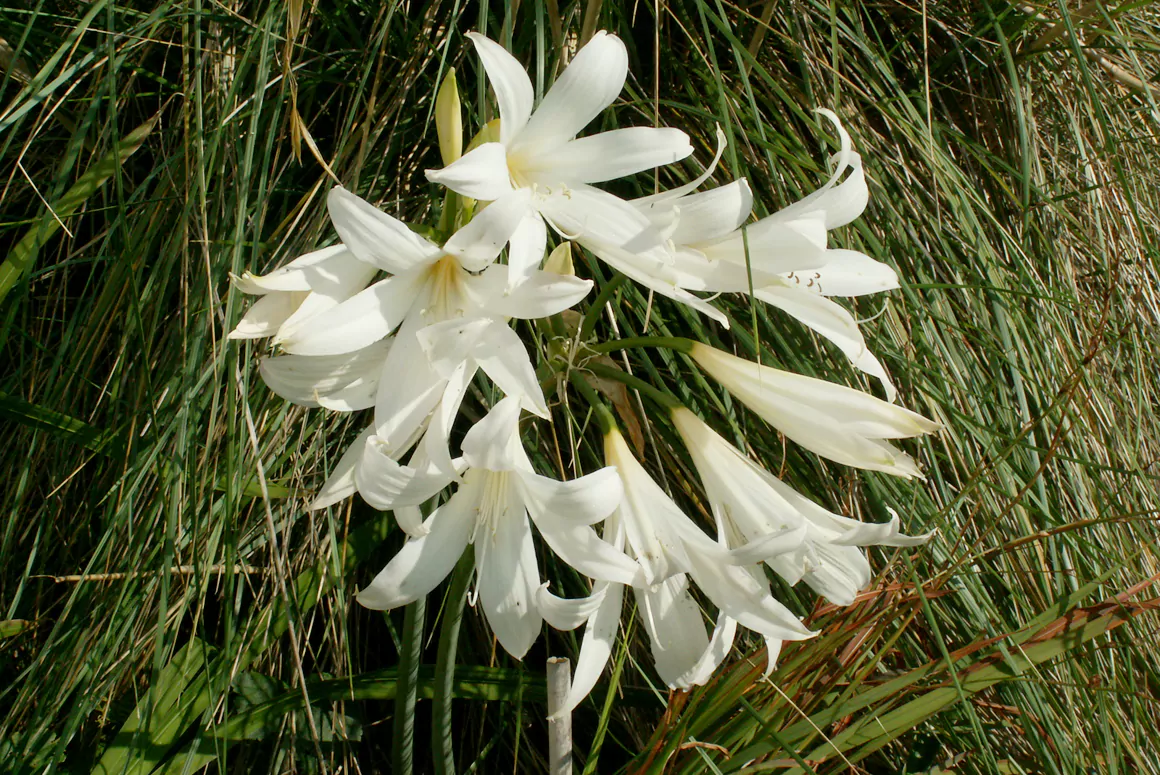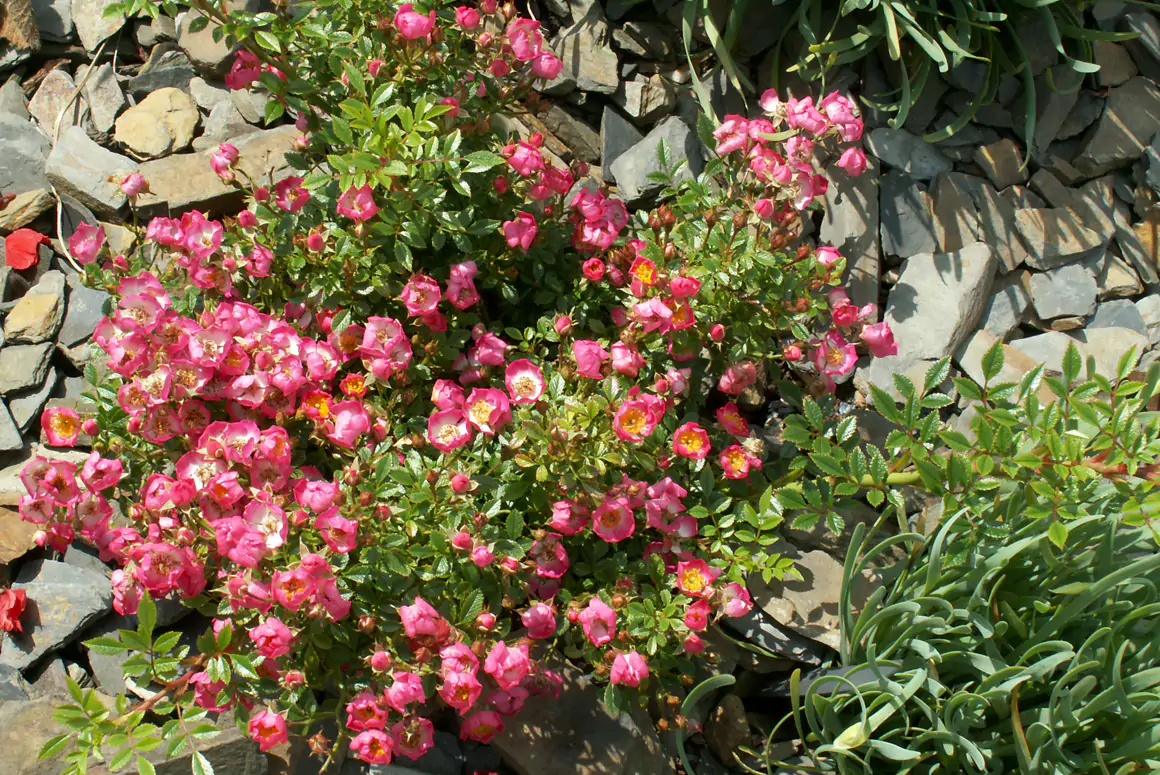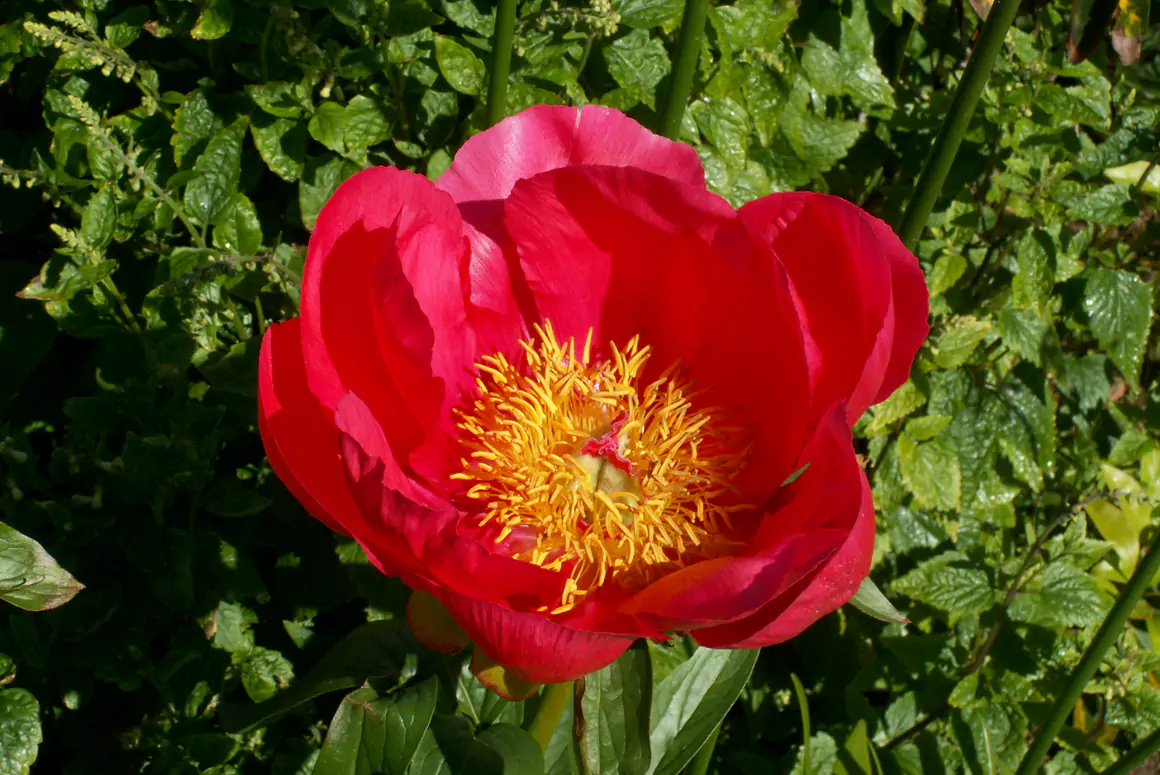I watched a blackbird on a budding sycamore
One Easter Day, when sap was stirring twigs to the core;
I saw his tongue, and crocus-coloured bill
Parting and closing as he turned his trill;
Then he flew down, seized on a stem of hay,
And upped to where his building scheme was under way,
As if so sure a nest was never shaped on spray.
Thomas Hardy (1840-1928)
This winter has tested my patience to its limit, with no two days alike. So many days have been wet or cold or both, and little time spent in the garden, but impending signs of spring are now encouraging me out. The camellias featured in the last issue, have been joined by other plants, almost a month earlier than normal. We have had short spells of frosty nights with temperatures down to -3, which has felled less hardy osteospermums and gazanias, but not my beloved agapanthus, despite a susceptible mixed parentage. A short spell in the garden revealed advanced shoots of Narcissus cylamineus, Scilla siberica and Fritillaria meleagris, and still early February!
Edgeworthia chrysantha is reputedly a distant Daphne relative and closely resembles them physically. Like Daphne bholua it was used by the Chinese to make paper. It also resembles them in its difficulty of culture (with me at least) but when satisfied provides a late winter flowering plant of unique beauty. After two failed attempts I hope that my latest 2 year plant is succeeding in its present situation, where it currently holds drooping flower heads on every stem. The flowers, initially like silver buttons develop into lightly fragrant yellow clusters in mid-spring. It requires a slightly acidic, humus rich soil in sun or shade and dislikes any degree of waterlogging. It is relatively expensive to buy but has become available in many garden centres- but is not for the novice gardener!
- Edgeworthia chrysantha
Twenty years ago Calycanthus were virtually unknown except in botanic gardens and specialist plant collections. Following hybridisation between Old and New World species a new and highly successful hybrid with the unwieldy name Calycanthus x raulstonii ‘Hartlage Wine’ was created. I have grown this for a number of years and it always provokes comment when in bloom, which can be for most of the summer. The large magnolia type flowers are deep wine red with touches of white and are produced on the tips of new shoots, so a light trim in early spring can induce better flowering. Seemingly indifferent to soil type but requiring moist conditions without waterlogging it is now becoming more widely available, especially on-line.
- Calycanthus x raulstonii ‘Hartlage Wine’
As Spring approaches, we are now seeing the acceleration of openings under the National Garden Scheme.
Treffgarne Hall
Treffgarne Hall near Haverfordwest has a stunning hilltop location with panoramic views. This four acre garden has wide lawns and themed beds. The focal point is the walled garden, with a double rill and pergolas, and planted with a multitude of borderline hardy exotics. Also featured are large-scale sculptures, heather bed, a gravel garden, stumpery and greenhouse. Unusual trees and shrubs include species rhododendron and magnolias, embothriums (Chilean fire bush) and crinodendrons (Chile lantern tree) that start flowering late spring. Spring is also the time to enjoy the cherry avenue in blossom.
Treffgarne Hall has open days which you can find in our Open Gardens diary and by arrangement visits from March to September which you can find here.
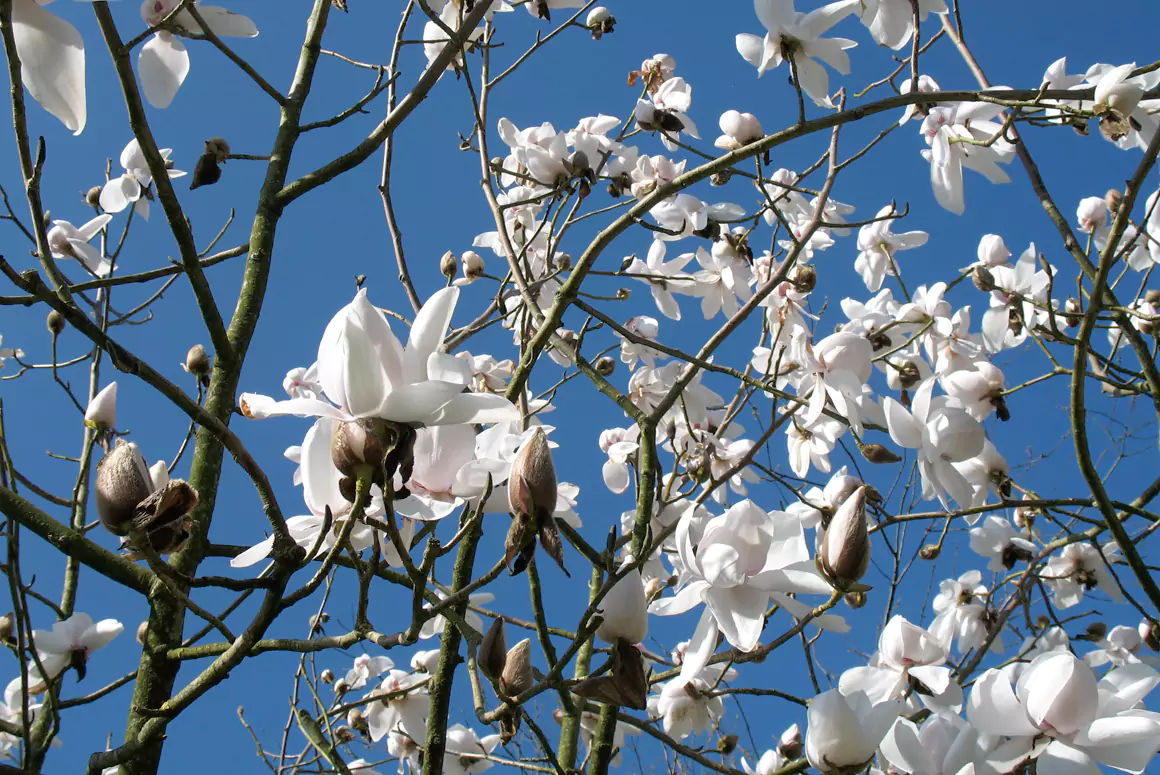
Longhouse Farm
Longhouse Farm in Gwent is a spacious two acre country garden with colourful borders, interesting trees and shrubs, vegetable garden, natural pond, and house and barns covered with roses and vines. Spring features an ancient Perry Pear surrounded by bulbs and seasonal plants. A woodland walk around spring fed ponds will lead you to wonderful views of ‘hidden’ Monmouthshire.
Longhouse Farm has open days which you can find in our Open Gardens diary.
Swallow Barns
The four acre garden of Swallow Barns in the Vale of Glamorgan, opens in April for tulip and blossom appreciation. The area around the house is formal with a shepherd’s hut, mixed herbaceous borders and a walk leading to a secluded pond. Meandering paths run alongside the River Waycock through an orchard of heritage apple trees, plums and cherries finally reaching a large pond with water lilies, dragonflies and a seating area.
Swallow Barns has open days which you can find in our Open Gardens diary and by arrangement visits from March to September which you can find here.
Maenan Hall
Moving north the superbly beautiful four acres of Maenan Hall lie on sloping ground within the Conwy Valley. Maenan Hall, owned by the Hon. Mr and Mrs Christopher Mclaren is celebrating the remarkable achievement of their 40th year of opening in support of the National Garden Scheme. There are dramatic views of Snowdonia from the garden which sits amidst mature hardwoods. Features include sweeping lawns, ornamental ponds and underplanted woodland with copious specimen shrubs and trees, many originating from Bodnant. A combination of magnolias, rhododendrons, camellias, pieris and cherries provide a breath-taking spectacle for a spring visit.
Maenan Hall has open days which you can find in our Open Gardens diary.
Photos: Gary Phillips
Llysdinam
Llysdinam Gardens in Powys are considered among the loveliest in mid Wales. Covering some six acres, they command sweeping views down the Wye Valley. Successive family members have developed the gardens over the last 150 years to include woodland with specimen trees, large herbaceous and shrub borders and a water garden which provide all year interest. The Victorian walled kitchen garden and extensive greenhouses grow a wide variety of vegetables, hothouse fruit and exotic plants. Don’t miss the Spring highlight of a magnificent display of rhododendrons and azaleas peaking in May.
Llysdinam Gardens has open days which you can find in our Open Gardens diary and by arrangement visits from 15 Jan to 16 Dec which you can find here.
Lift your spirits and banish the dark days of winter with a wonderful visit to a NGS garden in Spring bloom.
NGS Open Gardens
Welsh Country has two NGS open garden sections. The first ‘Open Gardens’ are gardens that are open on specific days and the ‘Long Term Open Gardens’ which are by appointment only. There is a search facility on each page so simply search for a garden name or an area of Wales (i.e. Swansea) you’d like to visit.


